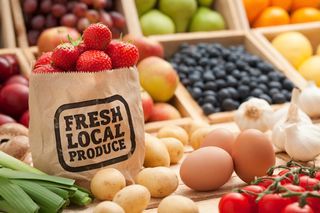The demand for organic fruit and vegetables is on the increase. Two out of three Australians are purchasing organic over conventional produce, suggesting that organics have shifted from a niche market segment toward the mainstream consumer. With the increase in demand for organic fruit and vegetables, producers have also started offering organic products across a number of other categories, including health and beauty, confectionary, and household. To understand the increased popularity across organics, we will identify three key factors that have driven the trend toward purchasing organic fruit and vegetables.
1) Knowledge
The perception of fruit and vegetables has changed from being a boring necessity to a fresh, healthy, and versatile meal option. It could be said that popular culture has influenced this change of attitude. For example, the trend toward television programs such as My Kitchen Rules and MasterChef has created hype around gourmet cooking, demonstrating colorful creations using seasonal abundance. In addition to this, health food advocates are becoming prominent influencers through social media, promoting organic recipes and superfoods.
2) Education
Not only are consumers becoming more health conscious, they are also becoming more educated about where and how their food is being manufactured. Consumers are converting to organic produce based on the belief that it is healthier and more ethical in the way it is produced.
3) Capabilities
Organic farming has risen by 13.7 percent in Australia and is predicted to generate $707.7 million in revenue this year alone.Supply chain improvements, more refined processing capabilities, and increased variety in the fresh sector has driven the increase in revenues, allowing more growers to produce organic products at lower price points.
Finally, due to popular demand many consumers are turning to farmers’ gates and farmers’ markets to purchase their fresh produce. While fruit and vegetables will always be on consumers’ shopping lists, to maintain relevance in the fresh food category it is important for retailers to adapt their processors, product ranges, and communications according to consumer trends and demands.
Contributed by Caroline Milar, Integer Australia
Image Source: Robina


